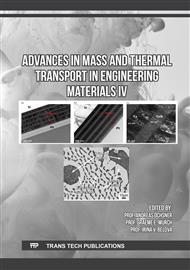p.152
p.162
p.171
p.179
p.191
p.209
p.219
p.229
p.239
Study on Two-Phase Pressure Drop of Methane during Flow Boiling in Mini Channel
Abstract:
For LOX/LCH4 variable thrust rocket engine, the propellant methane is traditionally selected as the coolant in regenerative cooling channel (RCC). With the decrease of engine thrust, the mass flow rate of coolant methane decreases gradually. At low engine thrust, the coolant methane is usually in a subcritical state. The heat transfer deterioration of subcritical methane occurs in RCC, which may cause thrust chamber wall ablation. The two-phase pressure drop data of methane are crucial parameters for the design and optimization of RCC. But it is rarely to find such measured frictional pressure drop data of methane in open published literature. The two-phase pressure drop of methane during flow boiling in the single mini channels with the diameters of 2.0 mm are investigated systematically. Effects of the mass flux (582.19~1755.48 kg/m2·s), inlet pressure (0.56~3.55 MPa), heat flux (53.25~318.68 kW/m2) on the frictional pressure drop of methane are discussed. The results show that the frictional pressure drop of methane during flow boiling increases with mass flux and inlet pressure at the experimental conditions, and heat flux shows weak effect on the frictional pressure drop. The comparisons of the experimental data with the predicted value by existing six correlations are analyzed. Contrary to the conventional channels, homogeneous model yields better prediction than five separated flow models. Present experimental results can provide reference for the design and optimization of RCC in LOX/LCH4 rocket engine.
Info:
Periodical:
Pages:
229-238
Citation:
Online since:
December 2023
Authors:
Price:
Сopyright:
© 2023 Trans Tech Publications Ltd. All Rights Reserved
Share:
Citation:


